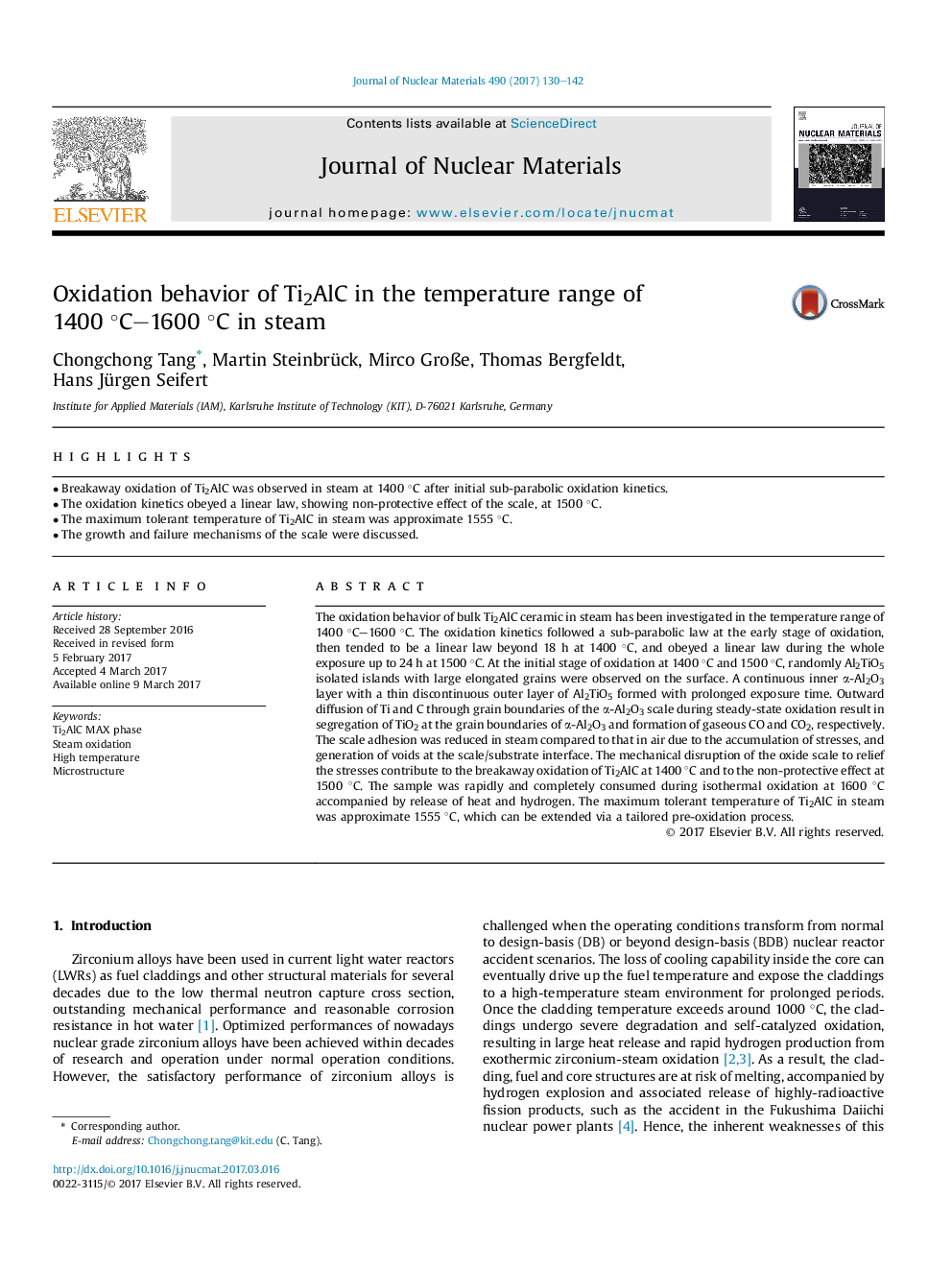| Article ID | Journal | Published Year | Pages | File Type |
|---|---|---|---|---|
| 5454018 | Journal of Nuclear Materials | 2017 | 13 Pages |
Abstract
The oxidation behavior of bulk Ti2AlC ceramic in steam has been investigated in the temperature range of 1400 °C-1600 °C. The oxidation kinetics followed a sub-parabolic law at the early stage of oxidation, then tended to be a linear law beyond 18 h at 1400 °C, and obeyed a linear law during the whole exposure up to 24 h at 1500 °C. At the initial stage of oxidation at 1400 °C and 1500 °C, randomly Al2TiO5 isolated islands with large elongated grains were observed on the surface. A continuous inner α-Al2O3 layer with a thin discontinuous outer layer of Al2TiO5 formed with prolonged exposure time. Outward diffusion of Ti and C through grain boundaries of the α-Al2O3 scale during steady-state oxidation result in segregation of TiO2 at the grain boundaries of α-Al2O3 and formation of gaseous CO and CO2, respectively. The scale adhesion was reduced in steam compared to that in air due to the accumulation of stresses, and generation of voids at the scale/substrate interface. The mechanical disruption of the oxide scale to relief the stresses contribute to the breakaway oxidation of Ti2AlC at 1400 °C and to the non-protective effect at 1500 °C. The sample was rapidly and completely consumed during isothermal oxidation at 1600 °C accompanied by release of heat and hydrogen. The maximum tolerant temperature of Ti2AlC in steam was approximate 1555 °C, which can be extended via a tailored pre-oxidation process.
Related Topics
Physical Sciences and Engineering
Energy
Nuclear Energy and Engineering
Authors
Chongchong Tang, Martin Steinbrück, Mirco GroÃe, Thomas Bergfeldt, Hans Jürgen Seifert,
